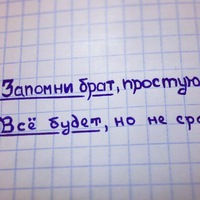
Посмотрите на картинку, определите слои почвы и запишите особенности.
 0
0
 0
0
Ответы на вопрос
 Внимание! Ответы на вопросы дают живые люди. Они могут содержать ошибочную информацию, заблуждения, а также ответы могут быть сгенерированы нейросетями. Будьте внимательны. Если вы уверены, что ответ неверный, нажмите кнопку "Пожаловаться" под ответом.
Внимание! Ответы на вопросы дают живые люди. Они могут содержать ошибочную информацию, заблуждения, а также ответы могут быть сгенерированы нейросетями. Будьте внимательны. Если вы уверены, что ответ неверный, нажмите кнопку "Пожаловаться" под ответом.

Ответ:
Пахотный слой
Верхний слой – пахотный, самый ценный, более плодородный и более богатый питательными веществами.
Подзолистый слой
Второй слой почвы называют подзолистым, он совершенно бесплодный, имеет белёсую окраску подобно цвету золы, образован из материнской породы в результате промывания кислотными выделениями растений и избыточными атмосферными осадками, он имеет неблагоприятную для растений кислую реакцию среды, поэтому и опасен для роста корней.
Иллювиальный слой
Третий горизонт почвы называют иллювиальным, он более плотный. Уплотнение происходит в результате вмывания в него различных веществ из верхних слоёв почвы, он содержит много коллоидных (глинистых) частиц, полуторных окислов железа и алюминия.
Материнская порода
Далее идёт материнская порода, из неё формировались все верхние слои почвы. От химического состава материнской породы зависит состав и плодородие всей почвы. Также почва не может содержать больше элементов питания для растений, чем их было в материнской породе.
Объяснение:
Картинку ты не прикрепил... Поэтому можешь написать это.
 0
0
 0
0

Identification of Soil Layers and Their Characteristics
To identify the soil layers in the given picture and describe their characteristics, we would need to analyze the image. Unfortunately, as an AI language model, I don't have access to visual information. However, I can provide you with some general information about soil layers and their characteristics.
Soil is typically composed of different layers, known as horizons, which are formed over time through various processes. The main soil horizons are:
1. O Horizon (Organic Layer): This is the topmost layer of soil, consisting of decomposed organic matter like leaves, twigs, and other plant materials. It is dark in color and rich in nutrients.
2. A Horizon (Topsoil): The A horizon is the layer below the O horizon and is often referred to as topsoil. It contains a mixture of organic matter, minerals, and microorganisms. This layer is crucial for plant growth as it provides nutrients and retains water.
3. E Horizon (Eluviation Layer): The E horizon is found in some soils and is characterized by the leaching or removal of minerals and nutrients. It is often lighter in color due to the loss of materials like clay, iron, and aluminum.
4. B Horizon (Subsoil): The B horizon is located beneath the A or E horizon and is often referred to as subsoil. It accumulates minerals and nutrients that have leached down from the upper layers. The B horizon can have different subcategories, such as Bt (clay-rich), Bk (carbonate-rich), or Bw (weathered).
5. C Horizon (Parent Material): The C horizon is the layer of soil that represents the parent material from which the soil is formed. It consists of partially weathered rocks and minerals.
6. R Horizon (Bedrock): The R horizon is the unweathered bedrock layer that lies beneath the soil layers. It is composed of solid rock and is not affected by soil-forming processes.
It's important to note that the characteristics of soil layers can vary depending on factors such as climate, vegetation, and geological conditions. Additionally, the presence or absence of certain horizons can also vary in different locations.
To accurately identify the soil layers and their specific characteristics in the given picture, it would be best to consult a soil scientist or geologist who can analyze the image directly.
I hope this information helps! Let me know if you have any other questions.
 0
0
 0
0
Похожие вопросы
Топ вопросов за вчера в категории География


Последние заданные вопросы в категории География
-
Математика
-
Литература
-
Алгебра
-
Русский язык
-
Геометрия
-
Английский язык
-
Химия
-
Физика
-
Биология
-
Другие предметы
-
История
-
Обществознание
-
Окружающий мир
-
География
-
Українська мова
-
Информатика
-
Українська література
-
Қазақ тiлi
-
Экономика
-
Музыка
-
Право
-
Беларуская мова
-
Французский язык
-
Немецкий язык
-
МХК
-
ОБЖ
-
Психология
-
Физкультура и спорт
-
Астрономия
-
Кыргыз тили
-
Оʻzbek tili























